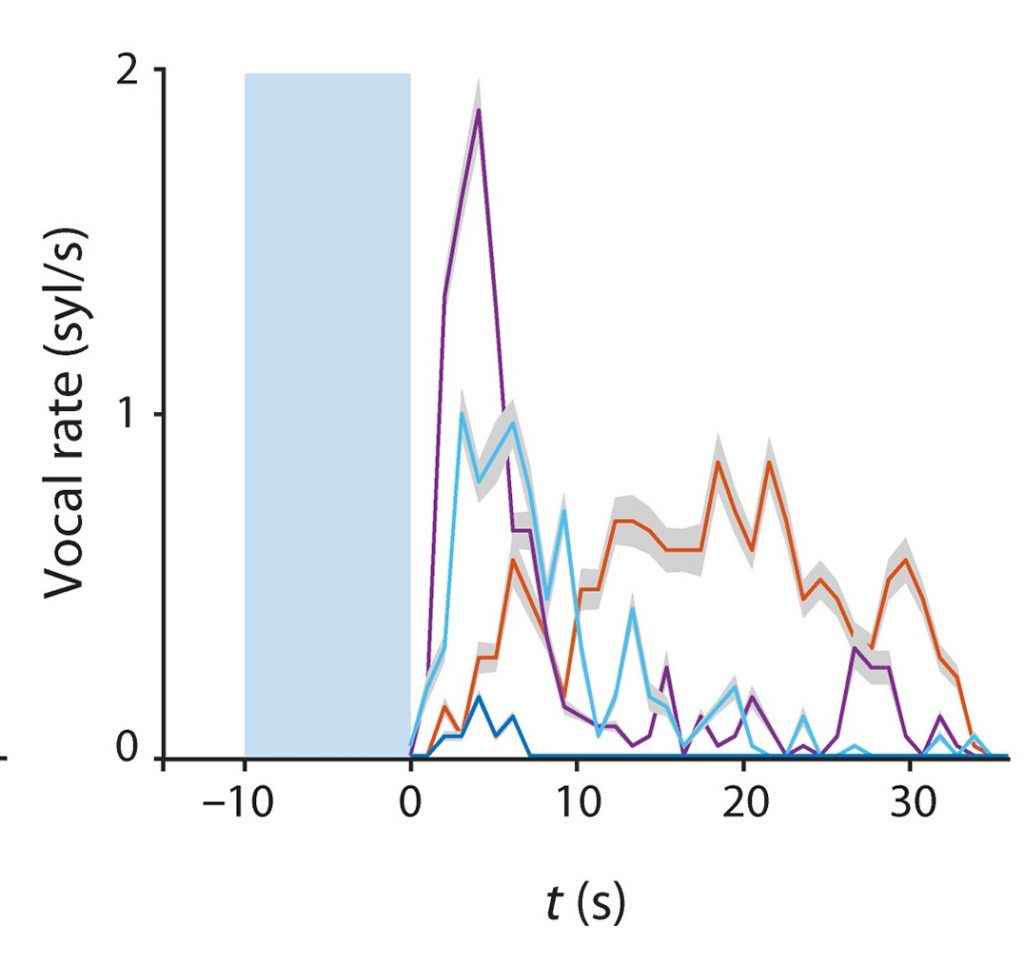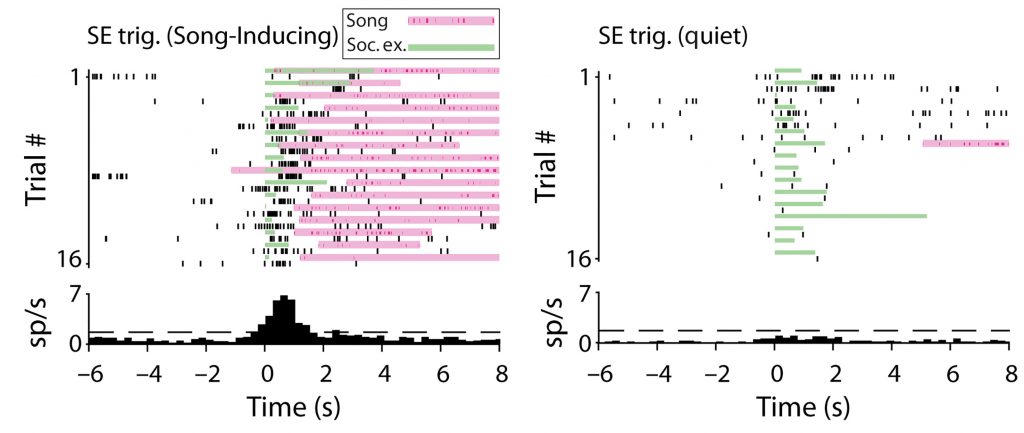Speech serves as a primary mode of communication for humans, yet the mechanisms by which the brain generates speech remain largely unexplored. Various animals also employ vocal sound production to communicate, providing valuable insights into how the brain orchestrates this complex process. In their courtship rituals, mice notably engage in emitting sequences of ultrasonic vocalizations (USVs). These vocalizations, occurring in the ultrasonic spectrum, are akin to the intricate songs produced by birds. Recent studies have found several regions in the mouse brain that participate in those song productions. However, the role of cortical circuits in this process is debatable. Gan-Or and London used advanced neuroscience methods to pinpoint a specific area in the anterior cingulate cortex (ACC) that, when stimulated, triggered ultrasonic vocalizations in mice. (figure 1; see also https://x.com/ben2brain/status/1709281538804789704?s=20).
They also observed increased calcium activity in that region that precedes vocalizations and that optogenetic suppression of this cortical region led to a decrease in vocalizations.
Finally, they recorded the activity of individual neurons from that brain region in the male mouse when it was introduced to a female mouse. They found neurons that showed different activity when the male vocalized to the female or when it remained silent. Overall, these findings suggest that the cortex plays a crucial role in the neural circuits governing vocal behavior in mice.
Figure 1:

Male mice undergoing cortical stimulation emit vocalizations in the absence of a female: A plot of syllable rate (number of vocalizations per second) by mouse with shaded area representing standard deviation. This shows that optogenetically induced activation of the anterior cingulate cortex induces vocal behavior about 10 seconds after stimulation offset.
Figure 2:

Activity Single cortical neuron increases preceding vocalization: Two example post-event time histograms (PETH) from a single unit showing responses triggered on social exposure (SE: a female mouse is presented to a male mouse). Green shaded areas show the duration and time of SE, and red shaded areas are songs (with individual vocal syllables as red bars). On the left are events leading to vocalization, and on the right are events leading to quiet. This demonstrates that the neural response to social exposure is modulated by vocal behavior, indicating a role for cortical activity in vocal production.


